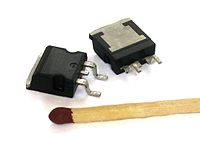
Photo from wikipedia
Abstract In this work, connecting holes are used between the two legs of a two-pass channel with and without ribs. The flow and heat transfer are obtained by numerical simulation… Click to show full abstract
Abstract In this work, connecting holes are used between the two legs of a two-pass channel with and without ribs. The flow and heat transfer are obtained by numerical simulation at the Reynolds number of 10,000, 30,000 and 50,000. Different rib configurations and positions of the connecting holes are considered. The result shows positive effect of the holes on the performance especially in ribbed channels. Connecting holes can largely reduce the pressure drop across the channel but the decrease in heat transfer is very small, thus the overall thermal performance can be improved significantly. For the smooth channel, pressure loss can be reduced by 14.66% at the heat transfer loss of 1.68%, for the ribbed channel pressure loss can be reduced by 47.99% with merely 8.24% decrease in heat transfer if the ribs and connecting holes are carefully arranged. Connecting holes can affect the boundary layer separation and reattachment between ribs. Separation bubble behind the rib can be suppressed or moved by connecting holes and acceleration occurs within the low velocity region. Therefore the weak heat transfer related to the separation can be improved. Based on this interaction between ribs and holes, further improvement in the performance of two-pass channel can be expected after better design of ribs and connecting holes.
Journal Title: International Journal of Heat and Mass Transfer
Year Published: 2019
Link to full text (if available)
Share on Social Media: Sign Up to like & get
recommendations!